| Umělec magazine 2000/5 >> EXPOsition 2000 | List of all editions. | ||||||||||||
|
|||||||||||||
EXPOsition 2000Umělec magazine 2000/501.05.2000 Raimar Stange | focus | en cs |
|||||||||||||
|
I. Time and Space
“Welcome to Hannover, the city of trade fairs” read a sign greeting visitors at the main train station in Hannover in 1981. It is common knowledge here that the Hannover trade fair was conceived in response to the first largest trade fair in Germany ending up after World War II in Leipzig, in the territory of the (socialist) German Democratic Republic. Concurrently, in 1981, the Kestner-Gesellschaft building in Hannover hosted a retrospective Andy Warhol exhibition. A year later, Warhol, the king of pop art himself, visited the Great Wall of China. Neo-liberal globalization and the “fall of Communism” were approaching quickly. Warhol noted in his diary on November 3, 1982: “We visited one commune. The kids were singing ‘God Bless America’ and ‘Jingle Bells.’” Twenty years later, visitors to Hannover are greeted at the Main Train Station by a sign reading: “Welcome to Hannover, the city of trade fairs and the EXPO.” With this world exposition, the now “unified” Germany was finally trying to prove its world-class status. It has only partially achieved this: EXPO 2000, with its central theme “Humankind, Nature, Technology” preached with confidence while at the same time it was poorly organized. The neo-liberal ideology of effectiveness was built around the consistent degradation of social achievements, amusing stupefaction and the naive belief in science. With neo-liberal urgency, the new Kestner-Gesellschaft, which had moved to another building in the meantime, presented at EXPO 2000 the art of Egon Schiele and Gustav Klimt from a Viennese private collection. But on the occasion of EXPO 2000, the old Kestner-Gesellschaft building hosted the exhibition Governmentality-Art and Its Response to International Hyperbourgeoisie And National Pettybourgeosie curated by Roger M. Buergel. The exhibitions in both Kester-Gesellschaft buildings were a part of the official Austrian cultural program at EXPO 2000. II. Four Good / Bad Reasons Welcome to Berchtesgaden—the local train station played a crucial role in the video Wieder da (Here again, 1998) by Franz Kapfer. This young Austrian artist’s video showed a strange parody of Adolf Hitler on crutches with wooden prosthetic legs wandering through the train station in Berchtesgaden asking for help in a Styrian dialect. Berchtesgaden is located in the immediate vicinity of Adolf Hitler’s summer residence in Obersalzberg. The video’s stylistic methods such as circling the beginning and ending footage and inserting subtitles alluded to early German silent films. The absurd statement that Hitler came back to Berchtesgaden lay somewhere between patriotic myth, comedy and cinema. The unreality of this statement dealt with history not only subjectively but also broadened the horizon of possible events in an almost poetic manner while critically confronting the current Austrian consciousness. Kapfer’s work referred to Hitler’s summer residence, his passion for train models and neo-fascist tendencies in today’s Austria, which found their clearest manifestation in the black/blue government coalition. This all made the video one of the four thematic pillars of the exhibition Govermentality as laid down by curator Roger M. Buergel. They included neo-fascism not only in Austria, the disruption of the International Monetary Fund and World Bank meeting in Seattle, EXPO 2000 in the name of neo-liberalism, and various ways of active resistance in general. The artistic coverage Waiting for Teargas (1999/2000) by Allan Sekula of the United States dealt with the events against the IMF and World Bank using a slide show. In his accompanying text, Allan Sekula wrote: “...And through the grenade explosions and through the clouds of tear gas, the sharp guitar tones of the American national anthem played by Jimi Hendrix resonated....” Austrian artist Octavian Trauttmansdorf focused directly on this year’s world exposition in his series of photographs EXPO 2000 (2000). Trauttmansdorf took pictures at the EXPO as the workers that constructed the exposition were leaving the sites and cultural and political VIPs were coming to the opening—i.e., in the delicate moment between construction and simulation. As for the three remaining pillars of the exhibition, the aspect of active resistance was looked at from various angles. One example was Neue Strassenverkehrsordnung (The New Traffic Rules, 2000) by Peter Friedl. With this neon sign Friedl, an Austrian artist living in Berlin, unknowingly referred to the book Über den bewaffneten Kampf in Westeuropa (On Armed Combat in Western Europe) written in jail by Horst Mahler, a German lawyer and “member” in the Red Army Faction (RAF). Publisher Klaus Wagenbach published the book in 1971 under the code name The New Traffic Rules and was sentenced to nine months in prison. A year later, new traffic rules were indeed imposed in Germany making the term among the left-oriented intellectuals a foreshadowing of the regulation of the individual freedom of movement for the benefit of co-existence, which met the demands of the market and technology. Friedl originally believed The New Traffic Rules was a code name for the police operation during which Ulrike Meinhof, the leading figure of the RAF, was arrested in 1972 in Hannover! Power and powerlessness revealed themselves in The New Traffic Rules through knowledge and error. A critique of ideology through and through. III. Rights of Power The title of the exhibition Governmentality—a play on words which works best in French—was used by theorist Michel Foucault who tried to understand the tense relationship between power and governance, government and (individual) resistance. In 1972, the year Ulrike Meinhof was arrested (Andy Warhol was then working on his Mao series) the legendary German underground bank TonSteineScherben was singing Keine macht für Niemand (No Power to Anybody). Foucault however insisted that resistance was a part of power and that it might even confirm and strengthen the ruling power. The point was not to set alternative and perhaps anti-authoritative power against the game of power but to play the game of power in a different way. This elementary standpoint vertically permeated all the four thematic pillars of the otherwise horizontally structured exhibitions. In the video o. T. (Untitled, 1999) by Anna Jarmolaewa, a urinating garden dwarf embodied the bourgeois in all of us, although to a different tune. A series of drawings Gesellschaft mit beschränkter Haftung (Limited Company, 1999) by Andreas Siekmann dealt with neo-liberalism setting up rules for still politically involved protest culture. A series of photographs Rights of Power by Martha Rosler showed traffic rules in American cities from the individual perspective of a car in motion, which revealed how subjects are bound to the postmodern urban atmosphere and how unknown figures define its structures. IV. Involved Art? The most convincingly put question of the exhibition had to do with the search for possibilities in politically involved art today. It is striking that the curator presented mainly traditional, almost conventional media: drawings, paintings, posters, video, photographs, a neon object, and texts. On the other hand, procedural works and “art as service” were hard to find. This limitation, however, made sense. Being finished art works, the individual pieces didn’t have to portray the illusion of general participation and openness in democratic interactivity. The works also didn’t have to follow real pragmatics, as is often the case in other art works based on a project, which may cause a quick loss of utopia. The fact that Buergel presented works that an art lover or a collector could possibly buy represented a certain risk in this enterprise. Perhaps for this reason Buergel showed only fragile and “flippant” works whose qualities stressed their ephemeral and vulnerable character. It’s perhaps more than bad luck that Peter Friedl’s The New Traffic Rules was almost always out of order during the course of the exhibition. The underestimation of technical and artistic standards was a common feature in a number of works. If it is impossible to get out of the power game, if it is long impossible to cross common formats, we are left with a conscious underestimation, an awkward mistake and delighted failure in the artistic strategy of politically involved art. The urinating dwarf by Anna Jarmolaewa is definitely too dumb to be real and photographs by Martha Rosler look more like snapshots than art photography. The video Wieder da by Franz Kapfer consistently underestimates technical standards of the 21st century. Similarly, the video documentation Die Regierung (Government, 2000) by Martina Aichhorn and Dorit Margreiter placed in the center of the exhibition as the hinge and axis does not really charm one with artistic finesse. This portrait of protest demonstrations against the black/blue government in Austria confronts the TV public with the video public, means accessible to anyone. As Foucault said, “It’s necessary to play the game but in a different way.” Gouvernmentalität, curated by Roger M. Buergel currently living in Austria. Participating artists: Martina Aichhorn / Dorit Margreiter, Eleanor Antin, Songül Boyraz, Ursula Biemann, Alexander Brener / Barbara Schurz, Laura Cottingham / Leslie Singer, Alice Creischer, Ines Doujak, Harun Farocki, Peter Friedl, Christina Goestl, Matthias Herrmann, Barbara Holub, Anna Jermolaewa, Franz Kapfer, Klub Zwei / MAIZ, Martha Rosler, Dierk Schmidt, Allan Sekula, Andreas Siekmann, Octavian Trauttmansdorff
01.05.2000
Recommended articles
|
|||||||||||||
|
04.02.2020 10:17
Letošní 50. ročník Art Basel přilákal celkem 93 000 návštěvníků a sběratelů z 80 zemí světa. 290 prémiových galerií představilo umělecká díla od počátku 20. století až po současnost. Hlavní sektor přehlídky, tradičně v prvním patře výstavního prostoru, představil 232 předních galerií z celého světa nabízející umění nejvyšší kvality. Veletrh ukázal vzestupný trend prodeje prostřednictvím galerií jak soukromým sbírkám, tak i institucím. Kromě hlavního veletrhu stály za návštěvu i ty přidružené: Volta, Liste a Photo Basel, k tomu doprovodné programy a výstavy v místních institucích, které kvalitou daleko přesahují hranice města tj. Kunsthalle Basel, Kunstmuseum, Tinguely muzeum nebo Fondation Beyeler.
|







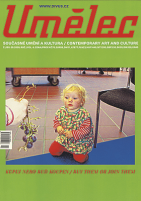











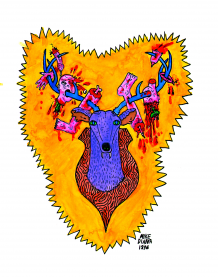




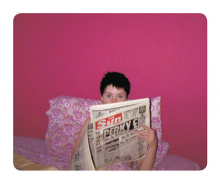
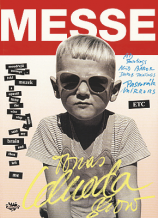
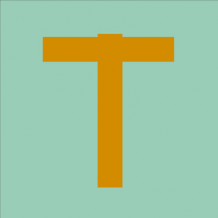
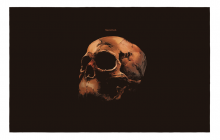


 New book by I.M.Jirous in English at our online bookshop.
New book by I.M.Jirous in English at our online bookshop.
Comments
There are currently no comments.Add new comment